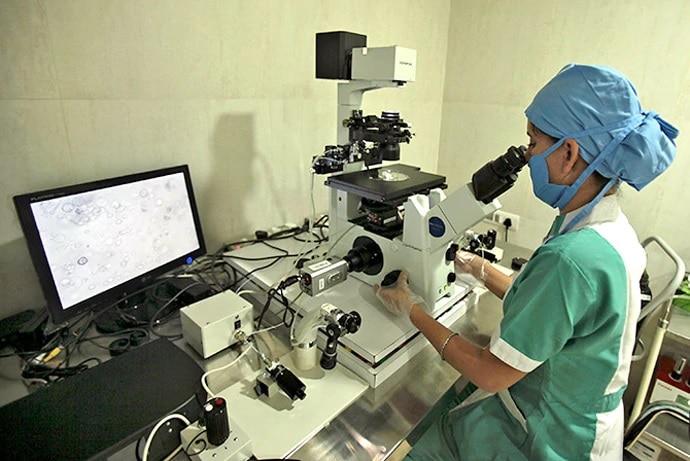How STEM education is critical to augmenting girls' education in India

The larger benefit of STEM education should be seen in the major ways in which it can unlock our gender equity goals.
The global economy has seen a massive increase in STEM-related jobs: a 44 per cent increase was reported in job postings related to STEM (Science, Technology, Engineering and Mathematics) between 2016 and 2019 in India. This trend, no doubt, rides on the exponential growth of technology and digitisation in the global economy. In a young country like India with a large youth demographic, STEM education could become a major driver of future economic growth.
But the larger benefit of STEM education should be seen in the major ways in which it can unlock our gender equity goals. Learning 21st-century skills and a STEM ‘mindset’ — characterised by digital fluency, critical thinking and the ability to problem-solve through innovation — could enable girls to build well-rounded futures and careers, increase their chances of occupational and income mobility, plus help them learn to question, experiment and develop their own agency. And gender equity in turn has been linked to critical goals such as reducing inequality and bringing about economic development.

If we want to do this, we need to look at what are the barriers and enablers for women and girls in accessing STEM education. As of 2020, women form less than a third (28.8 per cent) of the global average of the STEM workers. In India, this average is an unfortunate 14 per cent. The reason behind this is two-fold. The first is the digital divide, which points at the relatively low number of women for access to the internet and all its potential. The second and larger factor is that despite massive strides in education for girls, their overall dropout rates and a social push towards stereotypical jobs moves them away from STEM. For instance, female learners constitute only 40 per cent of students in Bachelors of Technology (B Tech) courses and 34 per cent for Bachelor of Engineering (BE) courses.
To work towards a solution, the report also identified six enablers, including role models and mentors who could help break myths and stereotypes and instil an aspiration in STEM-related careers. Growth of digital literacy, technology access for tapping into knowledge repositories like MOOC (Massive Open Online Course) and OERs (Open Educational Resources) could of course open up new possibilities. Improving teachers’ capabilities and a reimagination of education from the perspective of promoting life preparedness – in addition to the acquisition of subject knowledge – would act as a key backup as well.
Overall, the education systems should be reimagined around a STEM framework, and the curricula adapted to include critical thinking, a scientific temperament, problem solving and aptitude towards creativity and innovation. Articulating STEM as a mindset, rather than as subjects which need to be taught, is crucial to prepare girls to become changemakers and claim their stake in the future.
STEM education is, without a doubt, a key driver of the future of work. However, its relevance goes far beyond this. Through experiential learning, STEM education can help promote the understanding and application of science to everyday modern life, and thus help dispel deeply-rooted social myths and misconceptions – barriers – particularly in the area of gender equality and parity. UN agencies, in particular, stress on the spiral effect it can achieve by augmenting diversity and agency of women in ecological sustainability.
In this context, it is prudent to point out that even the smallest intervention can have a catalytic impact on girls. For example, encouraging girls to attain non-cognitive skills through experiential learning, along with facilitated sessions on agency building, life skills, career counselling and mentoring, has helped girls across the IBM Stem for Girls project areas to inspire and promote the idea of STEM futures.
Training teachers with the appropriate knowledge, teaching methods, along with some form of enablement to support them in becoming change agents can help boost girls’ interest and confidence and deal with parents’ awareness of the issues surrounding stereotypes.
Another critical factor that could go a long way is building the right policy environment. The recently passed National Education Policy (NEP) supports the social and economic inclusion for girls, but it does not directly address STEM education – something that can go a long way to achieve the vision of quality education for all.
Private sector initiatives could also have a catalytic role. Overall, a 360-degree approach can support the systemic growth of digital literacy and access to technology and trigger a much-needed shift towards making STEM education a reality for girls in India.

